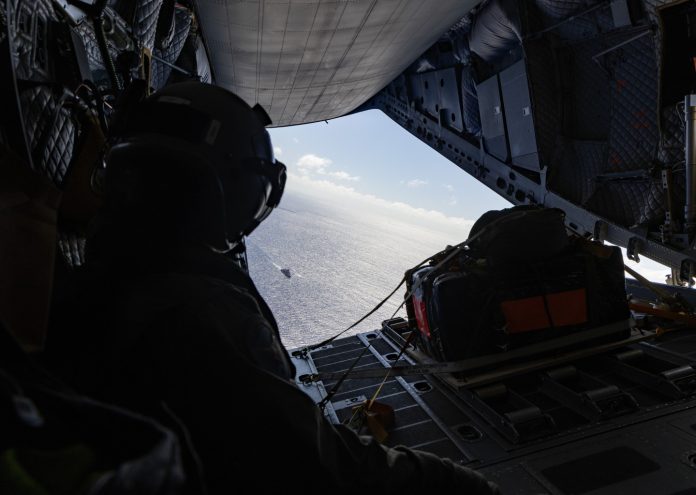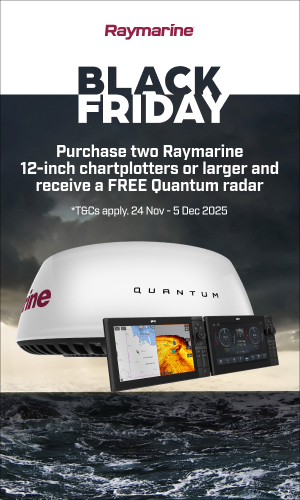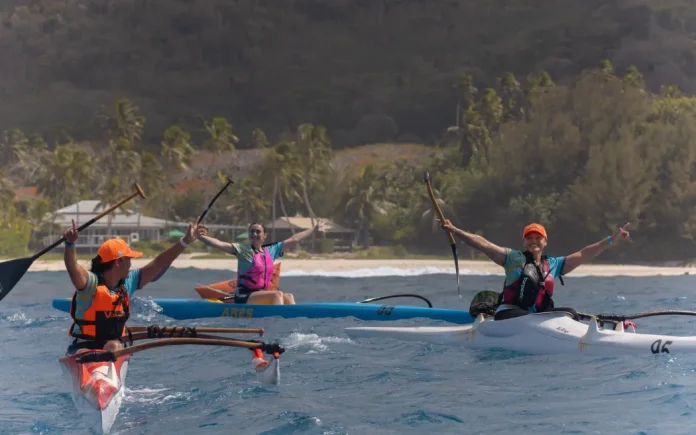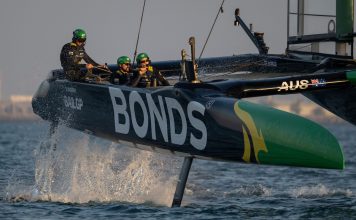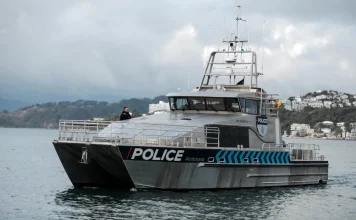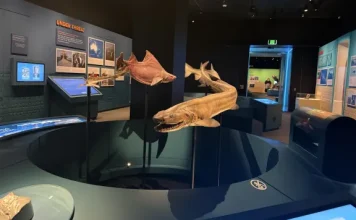A new kind of delivery
It’s not every day you receive mail from 1,000 feet up, but that’s exactly what HMNZS Te Kaha did during a recent resupply trial off the Queensland coast. A Royal Australian Air Force C-27J Spartan swooped overhead and dropped a tightly packed cargo case into the sea, where it was swiftly recovered by Te Kaha’s RIB team.
The delivery wasn’t routine—it was a deliberate test of a new Maritime Air Delivery (MAD) method, designed to support sustained naval operations without requiring port calls or ship-to-ship transfers. Conducted as part of Exercise Talisman Sabre 2025, the airdrop marked a potential leap forward in how the Royal New Zealand Navy handles logistics at sea.
“This was a great opportunity to test the concept of an aviation resupply,” said Lieutenant Commander George Blackmore, Maritime Logistics Officer aboard Te Kaha. “Being able to remain on tasking and still receive supplies means we can maintain operational tempo and avoid the limitations of port or helicopter dependency.”
International coordination and training value
Exercise Talisman Sabre is the largest multi-domain military exercise in the world, spanning northern Australia, Papua New Guinea, and the Coral Sea. The joint airdrop tasking highlighted the high level of interoperability between the Australian Defence Force and the New Zealand Defence Force.
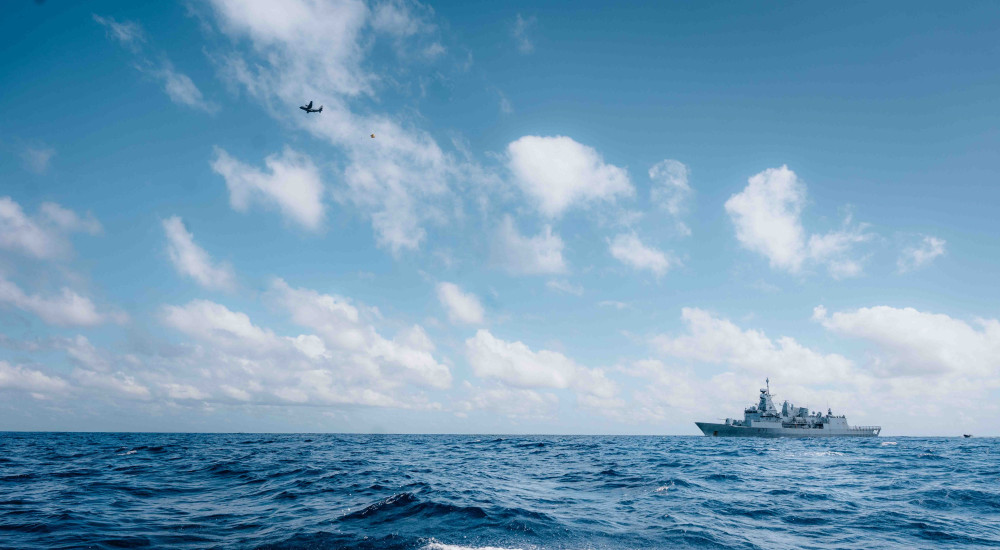
To make it work, planners from both nations had to synchronise flight paths, weather windows, and drop coordinates—no small feat given the pace of operations.
Lieutenant Alex Dooley and Petty Officer Omarama Sutcliffe from the RNZN were on board the Spartan to witness the drop firsthand. Both are embedded within the Australian Expeditionary Logistics Team Maritime, gaining valuable exposure to how Australia manages remote, over-the-horizon logistics support.
“We were there as observers to see how they operate and how we might bring elements of that capability back to New Zealand,” said LT Dooley. “The ADF’s model of a deployable logistics team that doesn’t rely on ships coming alongside is impressive. We had a few lightbulb moments.”
More than just systems
For Petty Officer Sutcliffe, the trial underscored the importance of relationships as much as systems.
“It’s about building those connections so when we need to move something from A to B, we’ve already got someone to reach out to,” he said. “These exercises help us speak the same language—whether we’re coordinating a drop or a full-scale deployment.”
The success of the drop and subsequent recovery aboard Te Kaha has sparked renewed interest in expanding airborne logistics capability within the RNZN. While helicopter resupply remains a key tool, MAD could offer flexibility in contested or remote environments, especially when deck space or availability is limited.
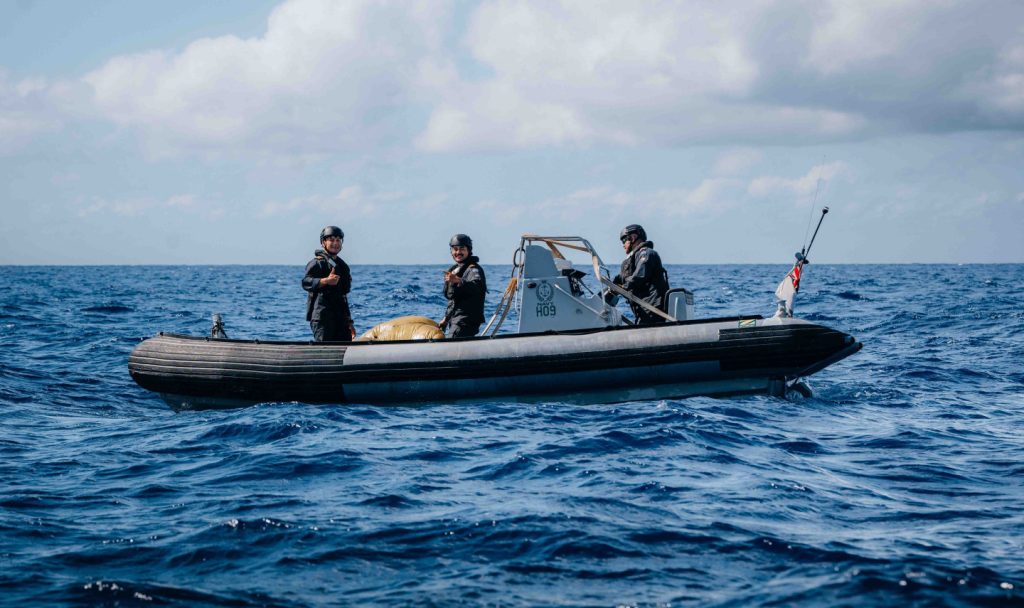
What next?
With New Zealand’s naval assets increasingly operating across a vast Pacific theatre, the trial represents more than just a one-off experiment. It’s a signal that the RNZN is actively seeking smarter, faster ways to sustain its fleet and its people—whether that’s via a tanker alongside, a helicopter overhead, or a cargo case falling from the sky.
As Exercise Talisman Sabre continues, lessons from this drop will feed into broader discussions about New Zealand’s deployable logistics model and the future shape of naval support.
“Ultimately, it’s about readiness,” said LTCDR Blackmore. “And readiness means being able to get what you need, when you need it—no matter where you are.”








